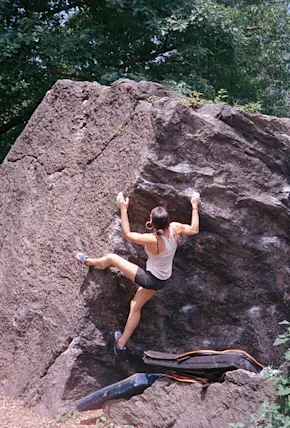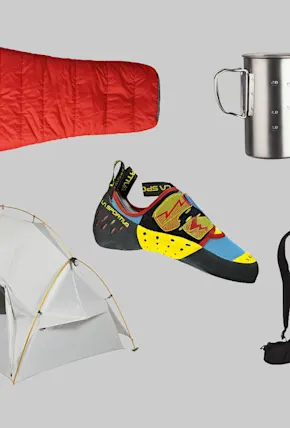It’s 6:50 a.m. in Estes Park, Colorado, the mountain-town gateway to some of the premier climbing spots in North America. Classic granite at 7,522 feet, calling to be climbed—except, it’s raining. I’m with La Sportiva’s Marketing Director Jonathan Degenhardt in a condo parking lot when we make the call. Pear Buttress, the five-pitch beauty just a few miles outside of Estes, is out. Movement Climbing + Fitness Boulder is in. So we load into La Sportiva’s minivan, a chaos of sticky rubber and bright, Euro-colored climbing apparel, and head out.
Considering La Sportiva’s recent growth, perhaps a gym was more appropriate anyway. In the past five years, as indoor climbing has blown the sport from an alpine specialty to a city phenom, the Italian cobblers have enjoyed wild growth as part of the popularity spike. As a privately owned company, Sportiva doesn’t publish their sales figures, although they will admit to a majority of rock shoe sales on the continent. So, for all the shoes worn on the bouldering mat in Queens, Toronto, or Monterrey, at least half of them will hail from Sportiva HQ in the Italian Dolomites (yes, they actually manufacture in Italy, and have since the brand's start in 1928).
Ogling the Instagram feeds of the world’s big wall climbers, you might notice La Sportiva on a majority of their feet, too. Though the company takes great strides to make an intro kick that’s as comfortable as it is functional, hooking climbers from their first day-pass. “What we want to do is to give someone the best experience we can in their first days, their first experience climbing,” says Degenhardt. “The big thing for that is, if your feet hurt, no matter what thing you're doing, it sucks. I don't care if you're playing hockey, or hiking, or running or rock climbing, if your feet are in pain, that sport, that activity is the worst thing you've ever done.”







